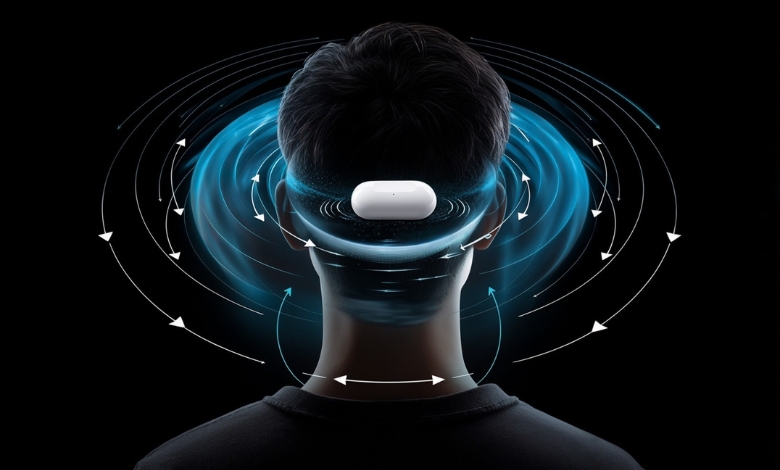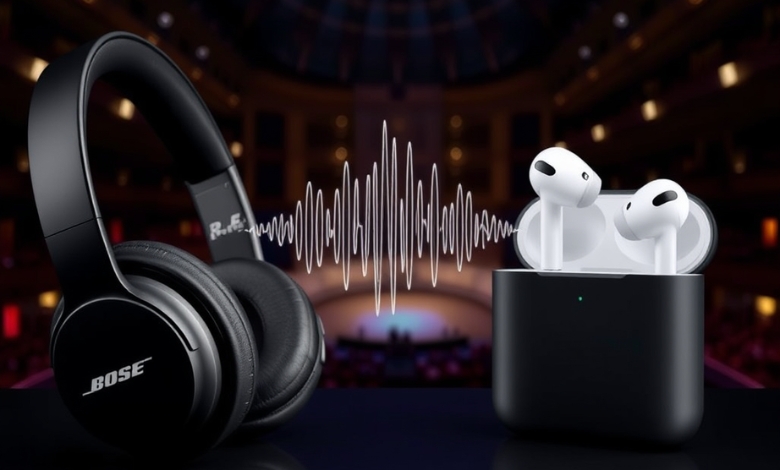Does Bose support Apple’s Spatial Audio? Learn why it doesn’t, discover workarounds, and explore alternatives for immersive sound.
I still remember the first time I experienced Spatial Audio on my AirPods Pro. It all felt like the sound was moving around me, either I was sitting in the middle of a concert or even at a movie theater of quality standard. Well, curiosity got the cat, and it had me asking myself a very important question: Could this experience be replicated with my Bose headphones?
After all, Bose is one of the biggest names in audio. But the thing is, Bose doesn’t officially support Apple’s Spatial Audio. Fear not, though, as there are some ways around this, and even some superior options.
Interestingly, this reminds me of how innovations in digital marketing and e-commerce have created similar immersive experiences for consumers. Just as Spatial Audio transforms the way we listen, digital marketing and e-commerce continue to redefine how we interact with products and brands in our daily lives.
If you’re wondering whether Bose supports Spatial Audio, why it doesn’t, and what your best alternatives are, then this guide will make everything clear. Let’s dive deep into the world of immersive audio to find the best solution for your listening needs.
Article Breakdown
What is Apple’s Spatial Audio?

Before getting into whether Bose supports it, let’s break down what Apple’s Spatial Audio is in the first place and why it’s such a game-changer.
Apple’s Spatial Audio is an immersive 3D sound experience that makes the feeling of the sound coming from every direction around you real. This is achieved by leveraging dynamic head tracking, combined with Dolby Atmos, to dynamically shift sound placement around the head in concert with movements.
Ever sit and watch some action movie on your iPhone or iPad, hearing it through a set of AirPods? When Spatial Audio’s fired up and some explosion goes off right in that screen, it’s going to come from right, even as you turn your head. The effect is pretty neat, similar to being in some sort of surround sound theater but right out of your headphones.
Devices that support Apple’s Spatial Audio:
- AirPods Pro (1st & 2nd Gen)
- AirPods Max
- AirPods 3rd Gen
- Beats Fit Pro
- Beats Studio Buds (limited support)
So, if you’re an Apple user, you might be wondering: Can I get this experience on my Bose headphones?
Does Bose Support Apple’s Spatial Audio?
Short answer: No, Bose does not officially support Apple’s Spatial Audio.
But why? Bose is a giant in the audio industry, so why wouldn’t they integrate one of Apple’s most exciting features?
The Real Reason Bose Doesn’t Support Spatial Audio
Apple’s Spatial Audio is designed to work exclusively within Apple’s ecosystem. It relies on Apple’s H1 and H2 chips (which are found in AirPods and some Beats headphones) to enable seamless head tracking and sound adjustments. Bose devices, however, do not have Apple’s proprietary chips, which means they can’t process Spatial Audio in the same way.
Instead, Bose has developed its own immersive sound technology, which brings us to the next section.
What is Bose Immersive Audio? A Strong Competitor to Apple’s Spatial Audio?
Bose knew they had to create something unique to compete with Apple. Enter Bose Immersive Audio, Bose’s answer to the immersive sound experience.
How Bose Immersive Audio Works
Unlike Apple’s Spatial Audio, which requires head tracking, Bose Immersive Audio creates a consistent, 3D-like soundstage regardless of how you move your head. The goal is to make it feel like the music or movie surrounds you, similar to a live performance or a top-tier sound system.
Which Bose Products Have Immersive Audio?
- Bose QuietComfort Ultra Headphones
- Bose QuietComfort Ultra Earbuds
These headphones use proprietary DSP (Digital Signal Processing) and advanced audio algorithms to create a wide, immersive soundscape. It’s not quite the same as Apple’s Spatial Audio, but it’s impressive in its own way.
Key Differences: Bose Immersive Audio vs. Apple Spatial Audio
| Feature | Apple Spatial Audio | Bose Immersive Audio |
| Head Tracking | Yes | No |
| Dolby Atmos Support | Yes | Yes (Bose equivalent) |
| Ecosystem Restriction | Apple only | Works with any device |
| Customization | Limited | Adjustable immersion levels |
If you want true Apple Spatial Audio with head tracking, you’ll need an Apple-certified device. But if you just want an amazing immersive experience, Bose Immersive Audio is a solid alternative.
Best Alternatives to Bose for Apple’s Spatial Audio
If you are fully invested in Apple’s ecosystem and need 100% compatibility with Spatial Audio, here are the best alternatives:
a) AirPods Max – The Ultimate Apple Spatial Audio Headphones
- Pros: Full Spatial Audio support, premium sound quality, seamless Apple integration
- Cons: Expensive, lacks deep bass compared to Bose
b) Beats Studio Pro – More Affordable Spatial Audio Option
- Pros: Spatial Audio support, great sound, lower price than AirPods Max
- Cons: Noise cancellation isn’t as strong as Bose
c) Sony WH-1000XM5 – A Top-Tier Alternative with 3D Audio
- Pros: High-end noise cancellation, excellent sound, great for Android & iOS
- Cons: No official Apple Spatial Audio support, but still immersive
Takeaway: Should You Get Bose or an Apple Spatial Audio-Compatible Headphone?
At the end of the day, it all comes down to what you prioritize:
- If you want true Apple Spatial Audio with head tracking, go with AirPods Max or Beats Studio Pro.
- If you want a more flexible immersive experience (across any device), Bose Immersive Audio is an excellent choice.
- If you want a premium alternative that supports 3D sound but works with multiple ecosystems, Sony’s WH-1000XM5 is a great pick.
Final Recommendation
If you’re already deep into Apple’s ecosystem, getting an Apple-certified device makes sense. But if you’re more brand-agnostic and want high-quality, immersive audio that works across devices, Bose still delivers an amazing experience.
Bonus: How to Get the Best Spatial Audio Experience (Regardless of Brand!)
Even if your headphones don’t officially support Spatial Audio, you can enhance your listening experience by:
- Using high-quality audio sources (Apple Music’s Dolby Atmos tracks are a great start)
- Optimizing your device settings (turn on spatialized stereo if available)
- Experimenting with EQ settings to get the best sound profile for your taste
In the end, audio is a deeply personal experience. Whether you choose Bose, Apple, or another brand, the best choice is the one that makes you feel immersed in the music, movies, and sounds you love.
Useful Resources:
- Control Spatial Audio and head tracking: Learn how to enable and customize Spatial Audio and head tracking for AirPods Pro, AirPods Max, and other supported devices.
- Listen with Personalized Spatial Audio for AirPods and Beats: Discover how to set up Personalized Spatial Audio using the TrueDepth camera for a tailored listening experience.
- Bose QuietComfort Ultra Earbuds: Explore Bose’s Immersive Audio technology, offering a spacious soundstage and world-class noise cancellation.
- Bose QuietComfort Ultra Headphones Review: A detailed review of Bose’s Immersive Audio feature, comparing its performance to competitors like Apple Spatial Audio.



